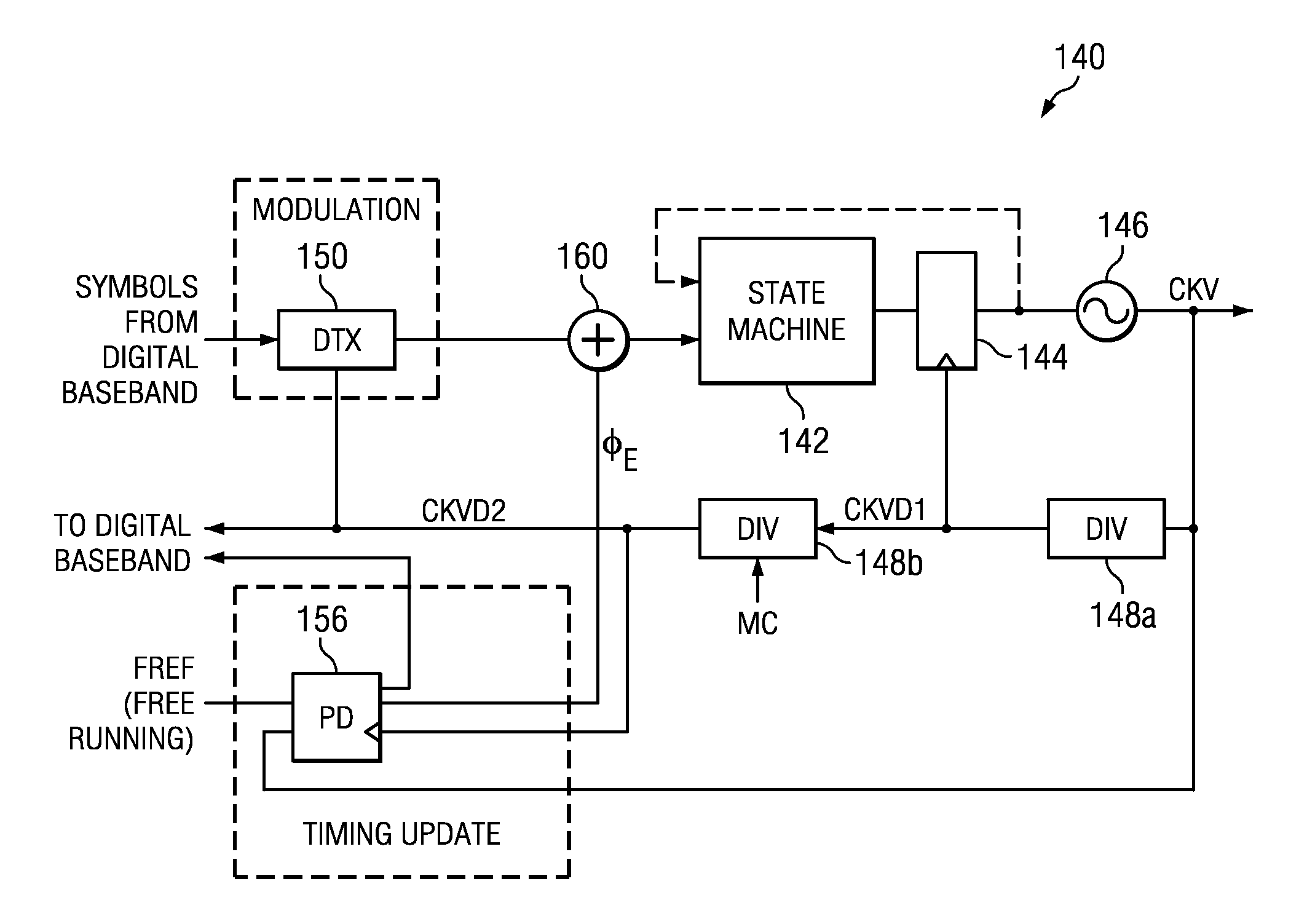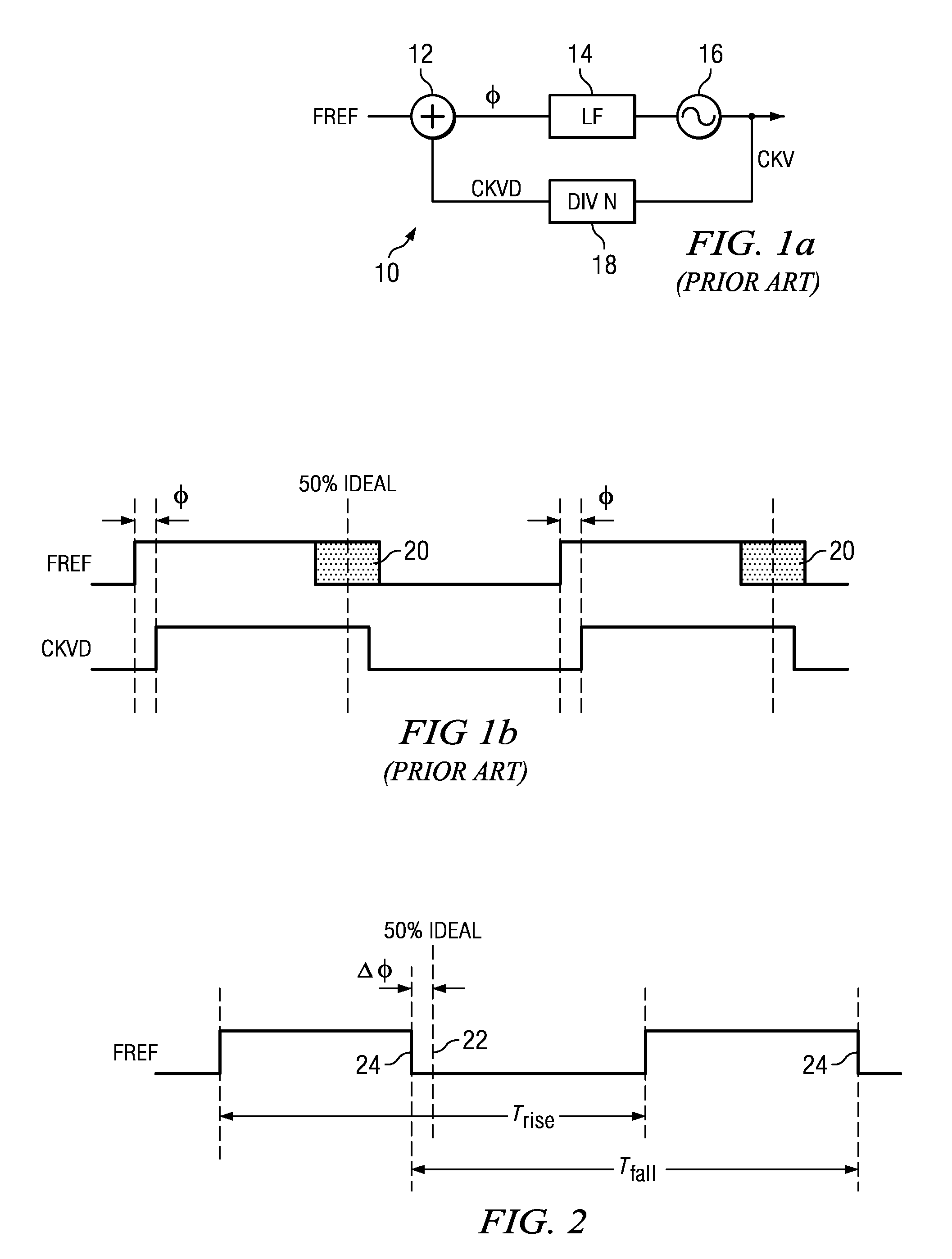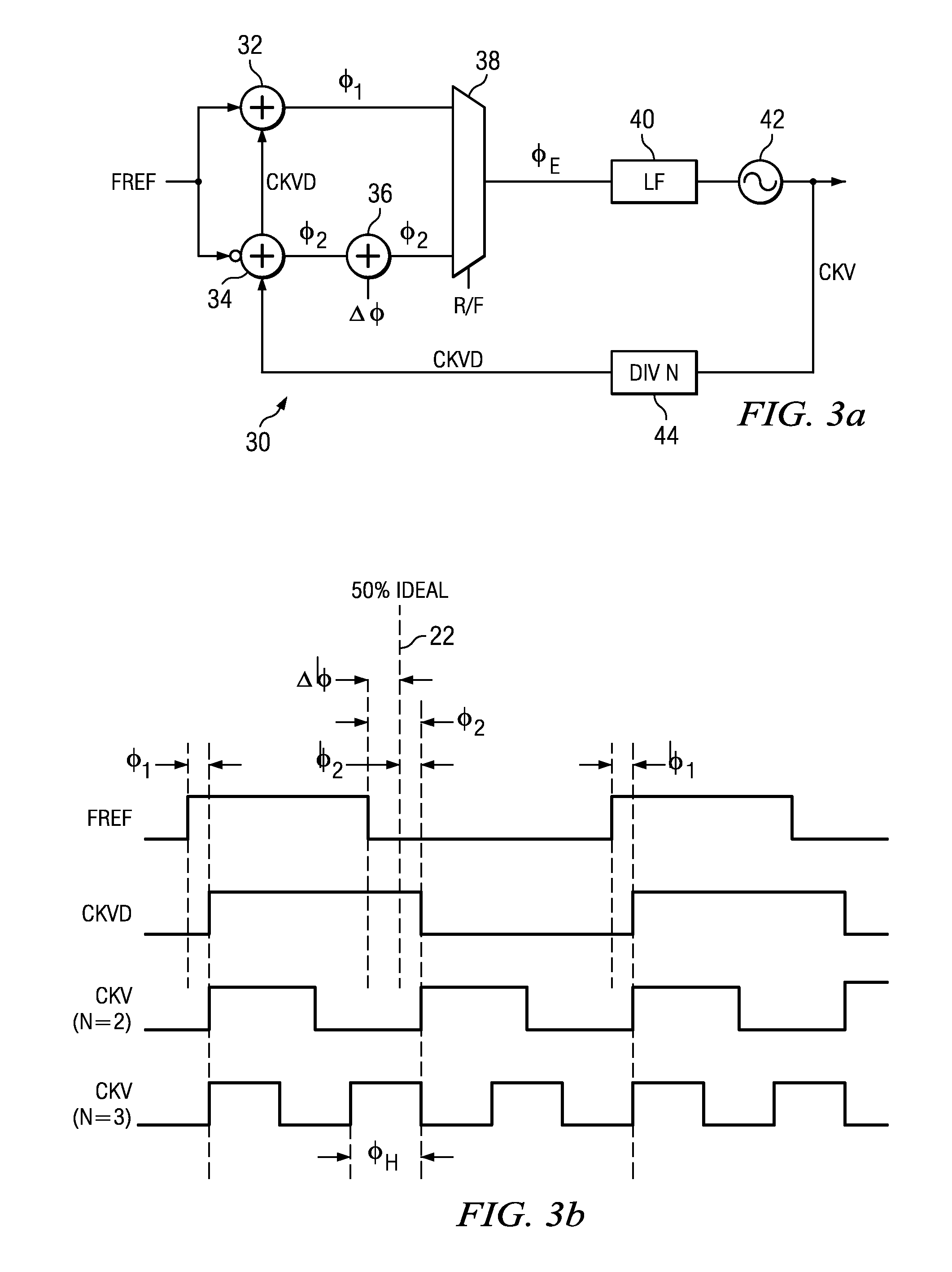Digital phase locked loop
a digital phase and lock loop technology, applied in the field of electronic devices, can solve the problems of difficult implementation of analog and rf circuits in communication circuits, difficult to integrate analog basebands with digital basebands, and difficult to implement traditional analog circuits, so as to reduce the effect of communication, eliminate unnecessary circuitry, and reduce the effect of spurious noise in the mobile communication devi
- Summary
- Abstract
- Description
- Claims
- Application Information
AI Technical Summary
Benefits of technology
Problems solved by technology
Method used
Image
Examples
first embodiment
[0040]FIG. 3a illustrates the invention for using both edges of a reference clock in a PLL 30. FREF is input to a first phase detector 32 (which compares phase information on a first active edge, e.g. rising edge) of FREF and a second phase detector 34 (which compares phase information on a second active edge, e.g. falling edge) of FREF. Alternatively, the FREF signal is input to the first phase detector 32 and the inverted FREF signal is input to the second phase detector 34, and both phase detectors operate internally on the same active edge of the reference clock signals that are 180 degrees out of phase. The output of the first phase detector 32 is a first error signal φ1 and the output of the second phase detector 34 is a second intermediate error signal φ2′. The intermediate error signal φ2′ is added to Δφ through phase offset adder 36 to generate the second error signal φ2. The first and second error signals are input to multiplexer 38, which selects one of the first and seco...
second embodiment
[0042]It would also be possible to compare the edges of FREF with the output CKV. In this case, both the rising edge and falling edge of FREF would be compared to a rising edge of CKV, if N (fCKV / fFREF) was an even integer. If N is an odd integer, two approaches could be used. In the first approach, rising edges of FREF would be compared to rising edges of CKV and falling edges of FREF would be compared to falling edges of CKV (it would also be possible to compare rising edges of FREF to falling edges of CKV and vice-versa). In the second embodiment, a half-phase adjustment φH could be added to φ2′ along with Δφ by the phase offset adder 36, such that φ2=φ2′+Δφ+φH.
[0043]FIG. 4a illustrates a block diagram of an all digital PLL (ADPLL) 60 of the type disclosed in U.S. Ser. No. 10 / 008,462, now U.S. Pat. No. 7,006,589, to Staszewski et al, entitled “Frequency Synthesizer with. Phase Restart”, filed Nov. 30, 2001, which is incorporated by reference herein. This ADPLL is designed to work...
PUM
 Login to View More
Login to View More Abstract
Description
Claims
Application Information
 Login to View More
Login to View More - R&D
- Intellectual Property
- Life Sciences
- Materials
- Tech Scout
- Unparalleled Data Quality
- Higher Quality Content
- 60% Fewer Hallucinations
Browse by: Latest US Patents, China's latest patents, Technical Efficacy Thesaurus, Application Domain, Technology Topic, Popular Technical Reports.
© 2025 PatSnap. All rights reserved.Legal|Privacy policy|Modern Slavery Act Transparency Statement|Sitemap|About US| Contact US: help@patsnap.com



